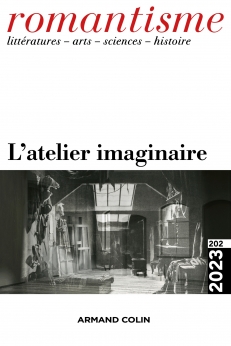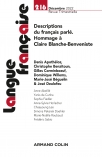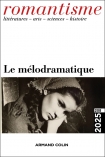
ROMANTISME N°202 (4/2023)
Pour acheter ce numéro, contactez-nous
Recevez les numéros de l'année en cours et accédez à l'intégralité des articles en ligne.
Les descriptions d’ateliers de peintres publiées au XIXe siècle s’attachent très souvent à rendre compte de leur atmosphère. Réconciliant les deux acceptions figurées du terme, l’appréhension sensorielle de l’air de l’atelier permet aux auteurs d’incarner leur récit, mais aussi d’évoquer l’ambiance qui règne dans les différents ateliers et plus particulièrement leurs rapports singuliers au confort bourgeois et aux normes de la vie quotidienne. Ainsi, les descriptions sensorielles de l’atmosphère de l’atelier s’attardent en particulier à la température qui y règne, à la présence de poussière ou de fumée de tabac ainsi qu’aux vapeurs de térébenthine, émanations du travail du peintre qui se mêlent plus ou moins à des senteurs mondaines. Observer l’imaginaire de l’atelier sous l’angle sensoriel met en lumière de nouveaux aspects du travail des peintres.
Nineteenth century descriptions of artists’ studios are very often concerned with trying to account for their atmosphere. In reuniting the two metaphorical meanings of the term, the sensorial perception of the air in the studio allows authors to give their story a body, but also to evoke the ambience of the different studios and in particular their specific relationship to the bourgeois comforts and to the norms of daily life. Thus, the sensorial descriptions of the studios’ atmospheres linger over their temperature, the presence of dust or tobacco smoke as well as the turpentine fumes which emanate from the painter’s work, that mix more or less with more worldly smells. The analysis of the way studios are imagined from a sensorial point of view highlights new aspects of the painters’ work.

